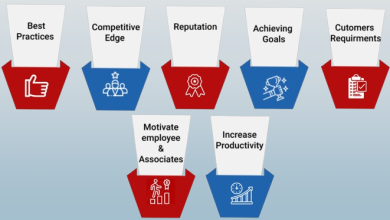In the realm of recruitment, the ability to efficiently sift through resumes and identify top talent is paramount. However, the task of manual resume screening can be tedious and time-consuming, often leading to overlooked candidates or mismatches between job requirements and candidate qualifications. This is where accurate resume parsing comes into play. In this comprehensive guide, we’ll explore the concept of the most accurate resume parsing how it works, its importance, and how you can leverage it to optimize your recruitment process effectively.
Understanding Accurate Resume Parsing
Accurate resume parsing refers to the process of precisely extracting and analyzing information from resumes to identify relevant data points such as skills, qualifications, experience, and education. Unlike traditional resume screening methods that rely on manual review, accurate resume parsing utilizes advanced algorithms and natural language processing (NLP) techniques to automate the parsing process and ensure accuracy and consistency in candidate evaluation.
The Importance of Accurate Resume Parsing
Accurate resume parsing is crucial for several reasons:
Efficiency: By automating the resume parsing process, recruiters can save time and resources that would otherwise be spent on manual screening.
Precision: Accurate resume parsing ensures that relevant data points are accurately extracted and analyzed, leading to more precise candidate evaluations.
Consistency: By standardizing the parsing process, accurate resume parsing helps maintain consistency in candidate evaluation criteria, reducing bias and improving fairness in the recruitment process.
How the Most Accurate Resume Parsing Works
The most accurate resume parsing utilizes a combination of advanced algorithms and NLP techniques to achieve precise data extraction and analysis. Here’s how it works:
Data Extraction: The parsing software scans the text of resumes and extracts key information such as contact details, work experience, education history, skills, and qualifications.
Normalization: Once the data is extracted, the parsing software normalizes it into a standardized format to ensure consistency and accuracy. This may involve formatting dates, standardizing job titles, and categorizing skills and qualifications.
Classification: The parsed data is then classified into different categories or fields, such as contact information, work history, education, and skills. This categorization enables recruiters to easily search, filter, and compare resumes based on specific criteria.
Validation: The accuracy of parsed data is validated against predefined rules and criteria to ensure accuracy and reliability. This may involve cross-referencing data points with external sources or verifying credentials and qualifications.
Database Integration: Finally, the parsed and validated data is integrated into the recruiter’s database or applicant tracking system (ATS), where it can be accessed, searched, and analyzed efficiently.
Benefits of the Most Accurate Resume Parsing
1. Improved Candidate Quality:
Accurate resume parsing enables recruiters to identify and evaluate candidates more effectively based on their skills, qualifications, and experience, leading to better candidate matches and higher-quality hires.
2. Time Savings:
By automating the resume parsing process and ensuring accuracy, recruiters can save time and resources that would otherwise be spent on manual screening and data entry.
3. Enhanced Efficiency:
Accurate resume parsing streamlines the recruitment process by quickly identifying qualified candidates and matching them to job openings, reducing the time-to-hire and improving overall efficiency.
4. Reduced Bias:
By standardizing the parsing process and criteria, accurate resume parsing helps reduce bias and ensure fairness in candidate evaluation, leading to more objective hiring decisions.
How to Leverage the Most Accurate Resume Parsing Effectively
1. Choose the Right Software:
Selecting the appropriate resume parsing software is crucial for achieving accurate results. Look for software that offers advanced parsing capabilities, customization options, and integration with your existing systems.
2. Define Parsing Criteria:
Clearly define the criteria and keywords you want the software to identify and extract from resumes. This may include specific job titles, skills, certifications, and experience levels relevant to your hiring needs.
3. Regularly Review and Update Criteria:
Continuously review and update your parsing criteria to ensure they remain relevant and aligned with your changing hiring requirements. This helps improve the accuracy and effectiveness of resume parsing over time.
4. Integrate with ATS:
Integrate your parsing software with your ATS or recruiting software to streamline the entire recruitment process. This enables seamless transfer of parsed candidate data into your database, where it can be easily accessed and managed.
5. Train Recruiters on Effective Use:
Provide training and support to recruiters on how to effectively leverage accurate resume parsing in their day-to-day workflow. This includes best practices for searching, filtering, and analyzing parsed resumes to identify top candidates.
Conclusion
Accurate resume parsing is a game-changer in the recruitment industry, empowering recruiters to efficiently manage and analyze resumes with precision and consistency. By automating the parsing process and ensuring accuracy, accurate resume parsing enables recruiters to save time, improve efficiency, and make better-informed hiring decisions. However, to fully leverage the benefits of accurate resume parsing, it’s essential to choose the right software, define parsing criteria effectively, and integrate it seamlessly into your recruitment process. By following the tips outlined in this guide, you can unlock the full potential of accurate resume parsing and optimize your recruitment process for greater success.





